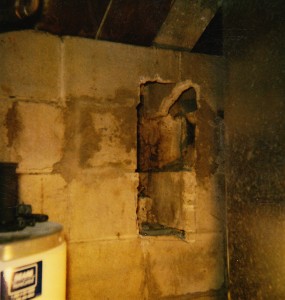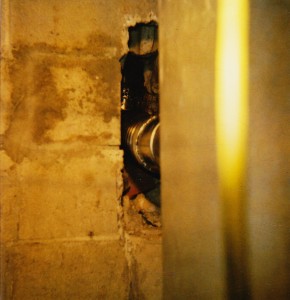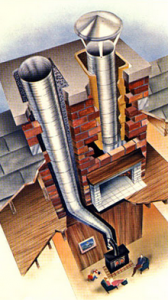In many cases, for one reason or another, the chimney will need to be relined. For a fireplace flue, it is necessary if there are cracked or damaged flue tiles, or the flue tiles are misaligned.
In some cases, the fireplace has a very lazy draft, in which case the flue may be over-sized, and need a liner to reduce the size of the flue.
Fireplace relining is also necessary when installing a wood or pellet stove insert into the fireplace, in order to meet code for the exhaust of the product.

The most common flue that needs relining is the oil flue. Because oil has sulfuric acid in its soot, the acid eats away at the flue tiles, eventually deteriorating the tiles and the joints between the tiles.
Deterioration can get to the point that there is potential for that soot to be leaking into the outer walls of the chimney and even back into the home through the chimney walls.
Often, it is necessary for us to remove part of the wall in order to properly install a liner into the oil flue. Depending on the structure of the wall, we will open up the smallest area possible so that we can create the proper connections and setup of the flue.

Once this is completed, we will seal the wall back up, make the final connections to the oil burner, and complete the installation at the top of the chimney.
Because the new liner is made from heavy gauge stainless steel, the acid cannot eat through the walls of the stainless steel, and therefore, insure that all exhaust gases and harmful contaminants are only exhausted safely to the outside.
Contact an emergency furnace repair service for an inspection of your furnace to see if you are in need of relining or furnace repair services.


